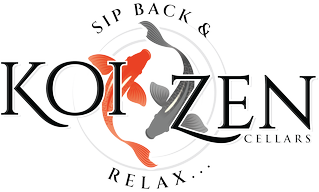[dc]A[/dc]
s a winemaker, I smell a lot of wine. Some wines are very aromatic and others are more reserved. Some smell like fruit while others are earthier or herbaceous. Each wine has its own set of aromas based upon the type of grape, the place it was grown and how it was produced and the kind of critters (bacteria) that are in the wine.
When I lead private wine tastings, the third “Zen Steps of Wine Tasting” is learning how to smell a wine and extract its aromatic qualities. Hopefully, the wine smells great, but sometimes a bottle can be a little “off” and through smell, you can usually detect if a wine is flawed or not.
What is fascinating is that the human nose is actually very sensitive and detect compounds down to one part per trillion or ppt. This is the equivalent of detecting one grain of salt dissolved in an Olympic sized swimming pool. However, most of our brains are wired for visual processing and we often ignore our nose.
Often when a wine is “OFF” people call it “Corked”, but in most cases, this is not the reason. Different microflora and fauna live in the wine (wine is a living solution) and can produce off aromas such as nail polish, adhesive strips, banana, rotten eggs, manure, dirty horse, wet mouse, etc. These bad aromas come from spoilage yeasts and bacteria.
A “corked” bottle of wine though is different. This is caused by a chemical reaction of TCA (Trichloroanisole) which is a naturally occurring chemical in many foods and in high concentration levels cause a “musty” smell. For many years, most TCA tainted wines were caused by the way the corks were produced. Corks were originally washed in bleach to sanitize and strip the cork’s natural color. Bleach and wine don’t party well together and lead to “corked/musty” wine. Cork manufacturers have changed protocols and now the occurrence of TCA in natural corks is very small. They have also found TCA in other components of winemaking including barrels, the fruit, bungs, equipment, well all over the place really in small doses.
To combat this problem, a small Chilean company has employed “man’s best friend” to help detect components that contain TCA. By using former Drug Sniffing dogs, they have trained them to detect VERY small traces of TCA from meters away. A dog’s sniffer is between 10,000 and 100,000 times more sensitive than a human. So, they allow their furry friends to wander around and seek out the “bad guys”. This company is now setting up shop in Sonoma which is really cool.
With such a great canine sniffer, it’s interesting that dogs stick their noses into the most inappropriate places and they don’t seem to mind what they are smelling. Maybe it is just humans that assign “goodness” and “badness” to a smell. To a dog, smell is a smell. Maybe we can learn from dogs when we assign “goodness” or “badness” values to a situation. A situation is a situation, we have the choice on how to judge the situation. Often by seeing the “other side”, we can “turn bad into good”.
Cheers,
